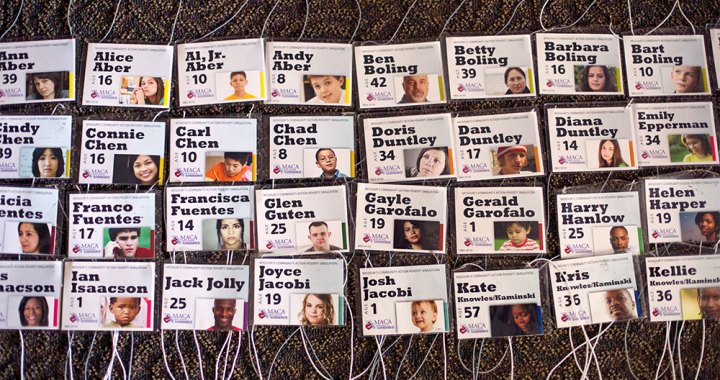The Power of Words: Using Poetic Analysis in a Social Work Research Course
Editor’s Note: This blog post was written by Amber Sutton, LICSW, ABD, a social work instructor at the University of Alabama at Birmingham, in collaboration with students from her undergraduate social work research course during the Spring 2022 semester. The students are (in alphabetical order): Iva Burdette, Jackie Chavez-Martinez, Jennifer Dussich, Courtney Kramer-Williams, Katie Kramer, Hannah Marsh, Rachel Shunnarah, Natalie Trammell, Ahmia Vain, and Ella Wolfe. In this blog post, Amber and the students share how they used poetic analysis to answer some age-old questions – What does it mean to be a social worker, and what is research? You can also read their two poems.
When agreeing to teach SW 320 Research Methods to BSW students at the University of Alabama at Birmingham (UAB), I knew I wanted to highlight alternative ways to conduct research that add an element of humanity to the data and encourage the students to use research to share power.
We started the class by reading Ann Hartman’s 1990 article, The Many Ways of Knowing. This article remains just as relevant today as it did then and has played a fundamental role in developing my relationship with research. Hartman’s editorial essay calls on social workers to recognize that each contribution adds to our knowledge and deepens our understanding. She boldly states, “there are many truths, and there are many ways of knowing” (p. 3). This article served as the foundation of the course because I wanted the students to understand that quantitative and qualitative methods are an integral part of social work research. Our profession misses out when we center on quantitative research as the only valid way of knowing.
During our very first class, I provided large post-it notes and markers. Then, allotting 20 minutes, I asked the students to answer these two questions in a way that felt most comfortable to them (words, drawings, etc.):
- What does being a professional social worker mean to you?
- How do you define research?
Two Ways to Decolonize a Social Work Research Course
Editor’s Note: Dr. Amy Werman, DSW, LCSW, is a Lecturer in Discipline at the Columbia School of Social Work, with over 20 years of teaching experience in social work education. In this blog post, she shares two practical suggestions for social work research courses, focusing on ways to decolonize traditional content and integrate an anti-racist/anti-oppressive approach to teaching about research methodology.
For the past 20 years, I have been educating MSW students. The first course I ever taught was Research Methods, an “interesting” initiation into the field of teaching considering that most students would never choose to take this first-year course were it not required. How do I know this? It is a question on a survey that I give my research students at the beginning of every semester. And, consistently, 50% of students say that, given a choice, they would not take the course.
It’s understandable. If we’re being completely honest, social workers are in the business of “doing,” whether that’s providing concrete services, administering programs, writing policy, or ameliorating a host of micro-level to macro-level problems on the local and global level. Students struggle to comprehend how studying research relates to their endgame of “doing.” Moreover, many students report having a fear of research, viewing it as something to get through. Incoming students offer words like “boring,” “overwhelming,” “statistics,” and “intimidating” when I ask them to free-associate to the term “research.”
Poverty Simulations in Social Work Education
As many of you may already know, simulations are increasingly being incorporated into social work education in various ways (online, in-person, virtual or augmented reality, large-scale, standardized patient, OSCE (Objective structured clinical exams), formative assessment, etc.). In addition, simulations often cover a range of topics such as child welfare home visits, assessment skills, and interprofessional teamwork. The goal of a simulation is to offer students an alternative or mock situation of a real one to meet specific learning outcomes. Reasons for using simulations range from assessing student competency, wanting to offer unique learning experiences to students (i.e., practice assessing for suicidality), and needing to shift instruction to virtual settings (i.e., think moving field hours out of community-based settings).
I have worked on several projects that integrate simulations into our BSW and MSW programs at the University of Alabama at Birmingham (UAB), where I work. One of the most successful has been the use of poverty simulations at our institution. In this blog post, I share why and how we implement poverty simulations, offering guidance for those wanting to add this active learning experience to their curriculum.
Re-Capping Teaching & Learning in SWK for 2021
One of my academic favorites is Dr. Katie Linder who produces a podcast called You’ve Got This, where she offers advice and examples for other academics as they navigate the world of higher education. Frequently, Katie talks about goal setting and how she works to accomplish her own goals. As I listened to her end-of-the-year podcast about her 2021 goals, all I could think about was my blog.
You see, every year, I set goals for this blog, and rarely do I accomplish these goals. Here is some of the evidence:
Review of Teaching & Learning in Social Work for 2019
Review of Teaching & Learning in Social Work for 2018
Review of Teaching & Learning in Social Work for 2017
Review of Teaching & Learning in Social Work Blog Posts for 2016
I even tried to set goals for the first quarter of 2020 and publish only seven blog posts. Sigh! Here they are:






